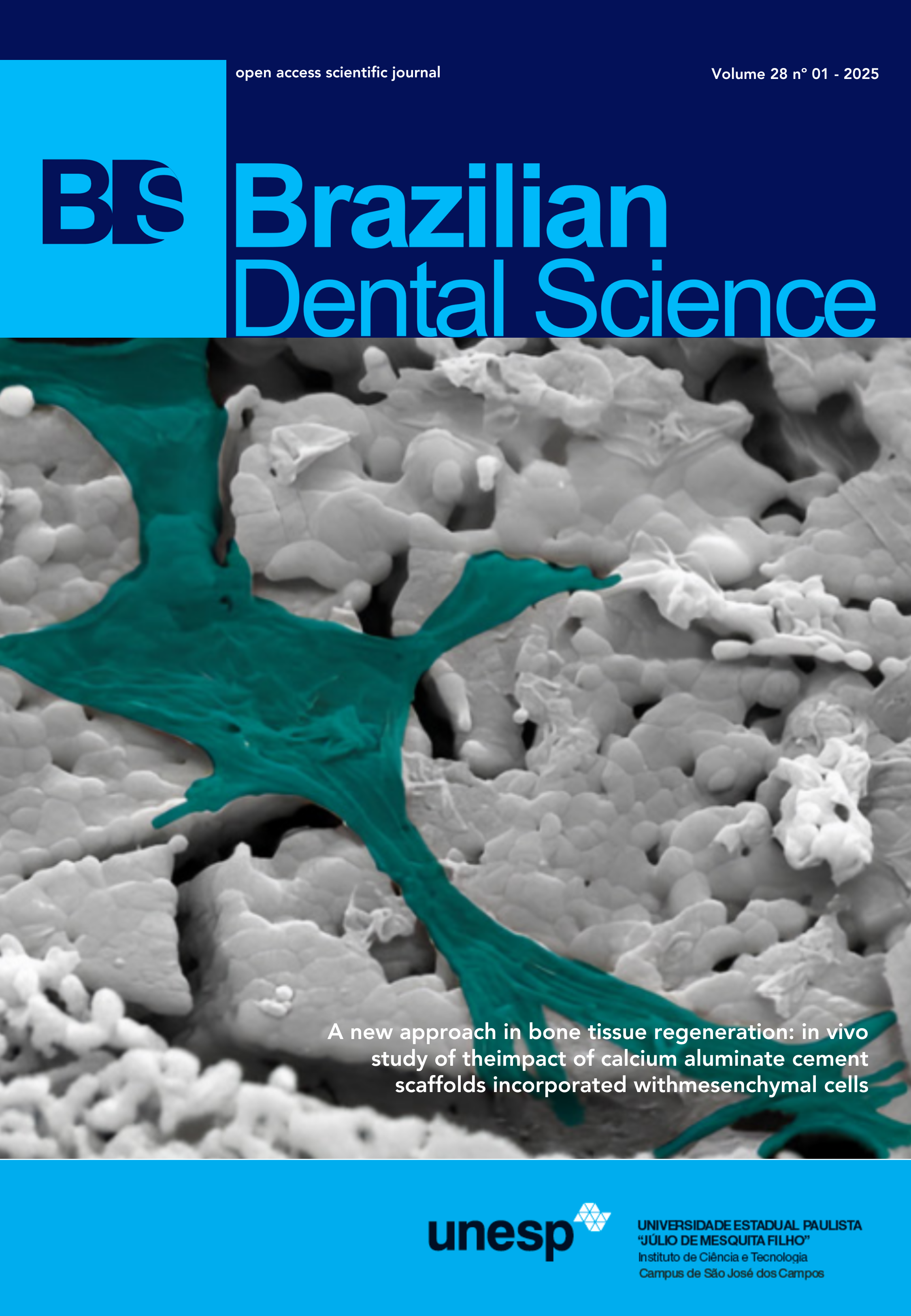The effectiveness of temporary anchorage devices (TADs) in the orthodontic management of impacted canines: a systematic review
DOI:
https://doi.org/10.4322/bds.2025.e4551Abstract
Background: Orthodontic traction of impacted canines is challenging, requiring precise biomechanical planning to prevent complications like root resorption. Objective: The systematic review aims to assess the efficiency of skeletal anchorage devices in orthodontic traction of these canines. Material and Methods: Following PRISMA 2020 guidelines, this review searched databases such as Medline and Scopus for clinical trials from 2016 onwards. It focused on studies from 2016 in English or French, specifically on orthodontic traction of impacted canines, excluding literature reviews, case reports and non-comparative studies. Results: Of the 2396 articles initially identified, 4 met the inclusion criteria. These studies compared outcomes of anchorage techniques, primarily TADs versus transpalatal arches, examining aspects like root resorption, traction duration, and force efficiency. Each study’s assessment for bias risk (RoB) was evaluated based on its design-type. Conclusion: TADs are advantageous for the orthodontic management of impacted canines, offering significant benefits in terms of stability and reduced side effects.
KEYWORDS
Anchorage procedures, orthodontic; Canine tooth; Impacted teeth; Orthodontic extrusions; Technique, Orthodontic Anchorage.
Downloads
Published
How to Cite
Issue
Section
License
Copyright (c) 2025 Brazilian Dental Science

This work is licensed under a Creative Commons Attribution 4.0 International License.
Brazilian Dental Science uses the Creative Commons (CC-BY 4.0) license, thus preserving the integrity of articles in an open access environment. The journal allows the author to retain publishing rights without restrictions.
=================




























